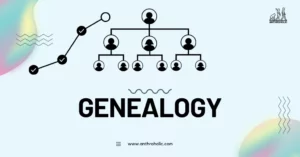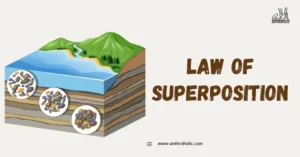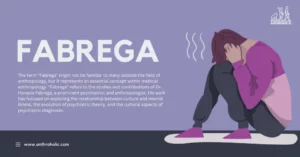AI Answer Evaluation Platform Live Now. Try Free Answer Evaluation Now
Stages of Human Growth
Human growth and development, an essential field of study in biological anthropology, explores the different stages of human growth from conception to old age [1]. Each stage is characterized by distinct physiological, cognitive, and psychosocial changes that influence our abilities, behaviors, and roles within society.

Table 1: Stages of Human Growth
| Stage | Age Range | Key Characteristics |
|---|---|---|
| Prenatal | Conception to Birth | Development of major organs and bodily systems |
| Infancy and Early Childhood | Birth – 6 years | Rapid physical growth, development of basic motor and language skills |
| Middle Childhood and Adolescence | 6 – 18 years | Steady growth, cognitive and emotional development, socialization |
| Adulthood | 18 – 60+ years | Career and family focus, physical and cognitive stability, aging |
| Aging and Senescence | Late adulthood – Death | Physical and cognitive decline, psychosocial adaptations |
| Death | – | Final stage of life |
Prenatal Stage
This initial stage starts with fertilization and lasts until birth [2]. It’s divided into three sub-stages:
- Zygote (fertilization to 2 weeks)
- Embryo (2 to 8 weeks)
- Fetus (9 weeks to birth)
Table 2: Sub-stages of the Prenatal Stage
| Sub-stage | Duration | Key Developments |
|---|---|---|
| Zygote | Fertilization to 2 weeks | Cell division and implantation |
| Embryo | 2 to 8 weeks | Major organs and systems develop |
| Fetus | 9 weeks to birth | Continued growth and development |
During the prenatal stage, critical development and rapid growth occur, forming the foundation of the human body [2].
Infancy and Early Childhood
Infancy spans from birth to two years, whereas early childhood extends from two to six years. Key developments during these stages include:
- Rapid physical growth
- Development of motor skills
- Emergence of language and cognitive abilities
- Social and emotional development [3]
During infancy, babies learn to trust their caregivers, develop motor skills such as crawling and walking, and begin to understand and mimic speech. In early childhood, children further develop language, cognitive, and motor skills, learn to socialize with others, and begin to understand and regulate their emotions.
Middle Childhood and Adolescence
Middle childhood ranges from six to eleven years, and adolescence stretches from twelve to eighteen years. These stages are characterized by:
- Slower and consistent physical growth
- Development of complex cognitive skills
- Increased social interaction and understanding of societal norms
- Emotional and identity development [4]
Adolescence, often associated with puberty, is a period of rapid growth and sexual maturation. It’s also a time of exploration and identity formation, with increased focus on peer groups and independence.
Adulthood
Adulthood, typically divided into early (20-39 years), middle (40-59 years), and late (60 years and over), is marked by:
- Stable physical and cognitive function, followed by gradual decline in late adulthood
- Career development and family life in early and middle adulthood
- Retirement, potential health issues, and end-of-life considerations in late adulthood
Table 3: Sub-stages of Adulthood
| Sub-stage | Age Range | Key Focus |
|---|---|---|
| Early Adulthood | 20-39 years | Career and family |
| Middle Adulthood | 40-59 years | Maintenance of established life paths |
| Late Adulthood | 60 years and over | Retirement and end-of-life considerations |
Aging and Senescence
Aging is a natural process characterized by a progressive decline in bodily function and increased susceptibility to disease and death. This stage of human growth begins from late adulthood and continues throughout the rest of an individual’s life.
Key characteristics of this phase include:
- Declining physical capabilities: muscle strength, mobility, and sensory abilities all tend to deteriorate with age.
- Cognitive changes: While some mental abilities such as vocabulary and general knowledge may remain stable or even improve, others such as memory and processing speed may decline.
- Psychosocial adaptations: Older adults often need to cope with changes such as retirement, the loss of loved ones, and the anticipation of their own mortality.
Despite the challenges associated with aging, many individuals are able to maintain high levels of cognitive and physical function into old age, thanks in part to healthy lifestyle choices, positive mental attitudes, and advances in medical science.
Death
The final stage of human growth is death. The inevitability of death underscores the importance of each preceding stage and the ways in which they prepare us for this final phase. Cultural and personal attitudes towards death vary greatly, often influenced by religious or philosophical beliefs.
Conclusion
The stages of human growth represent an intricate interplay of biological, cognitive, and psychosocial transformations. Studying these stages from a biological anthropological perspective not only enhances our understanding of human life but also promotes holistic approaches to health and wellness across the lifespan.
References
[1] Jurmain, R., Kilgore, L., & Trevathan, W. (2016). Essentials of Physical Anthropology. Cengage Learning.
[2] Moore, K.L., Persaud, T.V.N., & Torchia, M.G. (2019). The Developing Human: Clinically Oriented Embryology. Elsevier Health Sciences. https://www.ncbi.nlm.nih.gov/pmc/articles/PMC1256762/
[3] Shonkoff, J.P., & Phillips, D.A. (Eds.). (2000). From Neurons to Neighborhoods: The Science of Early Childhood Development. National Academy Press.
[4] Steinberg, L. (2016). Adolescence. McGraw-Hill Education.




